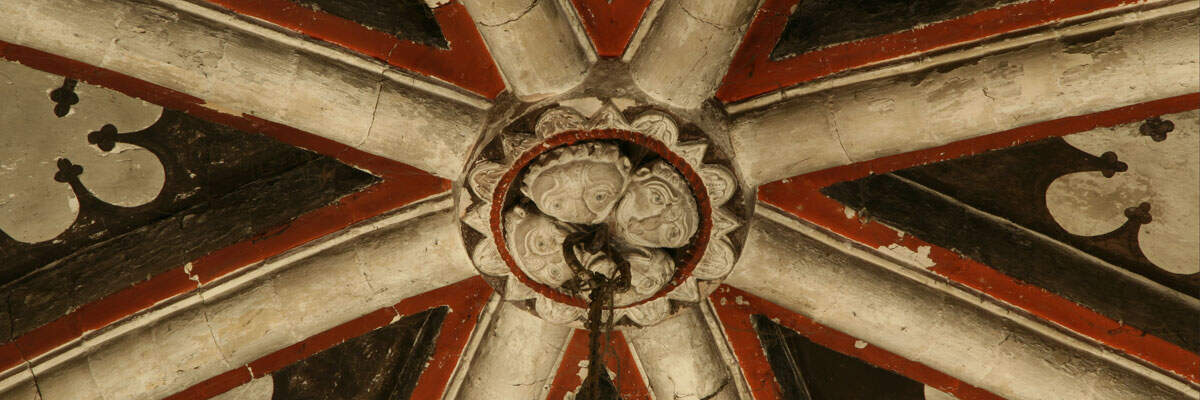The church was begun in 1092, presumably at the E. Of the 11th-12thc. work the E wall of the N transept survives, with a chapel arch and above it a triforium. Judging from the evidence of the fabric, the chapel, originally apsed, was remodelled early in the 13thc. and given a square end. Towards the end of the 14thc. a doorway was inserted from the chapel into the N choir aisle, and it may have been at that time that the arch into the transept was walled up and the chapel turned into a vestry. It remained blocked and invisible, at least from the transept side, until 1930, when it was re-opened. At that time 'traces of colour and patterns' were visible (Story of Chester 1939), but they are not now. The higher levels of the transept are Perpendicular. The only other 12thc. feature of the church is the tower at the W end of the N aisle, now a baptistery and dateable stylistically some 40-50 years after the N transept. Inside the church its E and S arches and its N window have scallop capitals, and the remains of a similar window are visible in the W bay of the N aisle wall. For the rest of the church, the five-bay choir can be dated to c.1300, the Lady Chapel slightly earlier (c.1260-80), and the crossing and S transept to the early- to mid-14thc. The nave arcades appear uniform on N and S, but in fact the S side belongs to the 1360s and the N to Abbot Ripley's time (1485-93). St Werburgh's Chapel was a late Perpendicular addition to the end of the N choir aisle.
Construction is of red sandstone, but the appearance of the exterior in particular owes much to the various campaigns of restoration carried out in the 19thc. The earliest of these was Harrison's (1818-20), followed by Hussey (from 1844), Scott (from 1868) and Blomfield (from 1882).
The cloister is to the N of the church, and here a good deal of Romanesque fabric still stands. Starting with the W or Cellarer's range, alongside the 12thc. NW tower is the rib-vaulted Abbot's Passage, entered through a 12thc. doorway, with St Anselm's Chapel above it. To the N of this is the long groin-vaulted undercroft of the range: a structure in two sections now housing an exhibition area and the cathedral shop, and originally extending beyond the square of the cloister to the N. Turning the NW corner into the N walk there is a 13thc. doorway to a passage between the Cellarer's range and the refectory. This last takes up the whole of the walk, and is of c.1300 as it stands. The Warming Room, containing the day-stair giving access to the dormitory, occupies the N end of the E range. Between this and the chapter house vestibule is the slype, and the S end of the walk is occupied by the W wall of the N transept. The S wall of the S walk, i.e. the other side of the N nave aisle wall of the church, is entirely 12thc., and contains two rows of three segmental-headed niches, very shallow for wall tombs, and at the E end of the walk an elaborate late 12thc. doorway into the N nave aisle. The cloister arcades were rebuilt c.1525-30. St Anselm's Chapel itself is built at the S end of the W cloister walk, between the Cellarer's range and the NW tower of the church, and above the Abbot's Passage. It is a mid-12thc. vaulted chapel, described more fully in section IV.4.c below.



